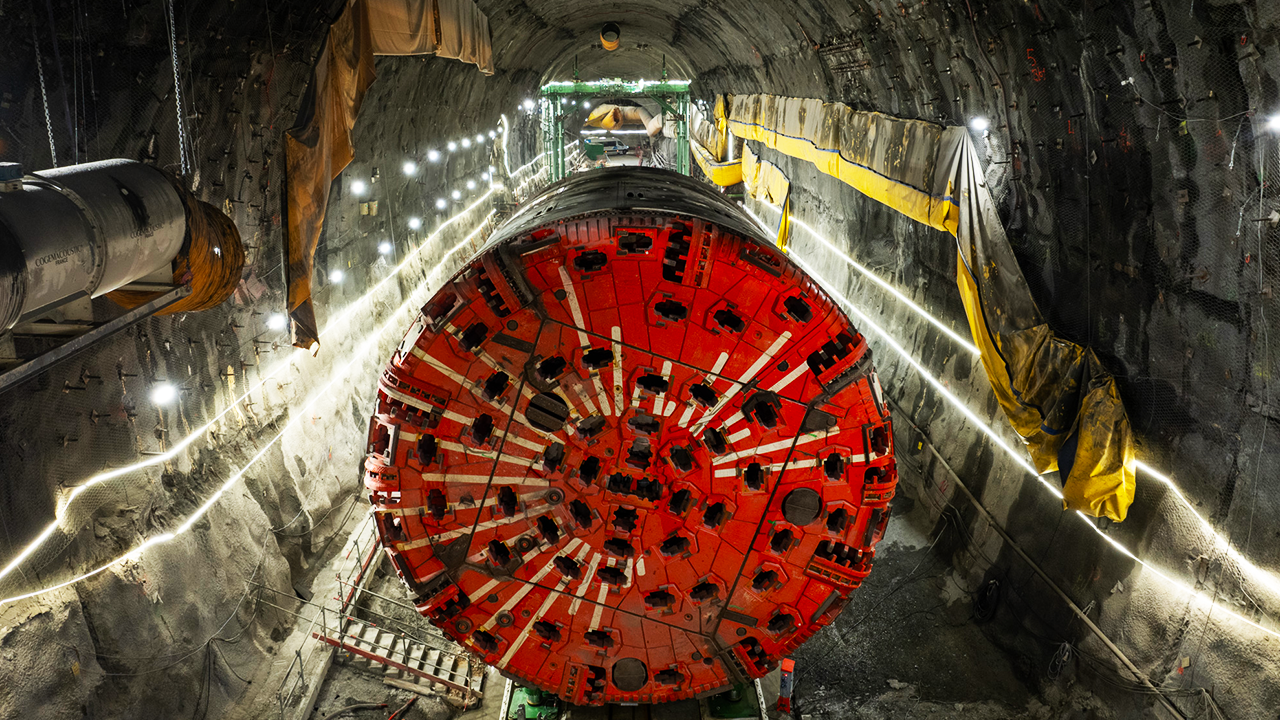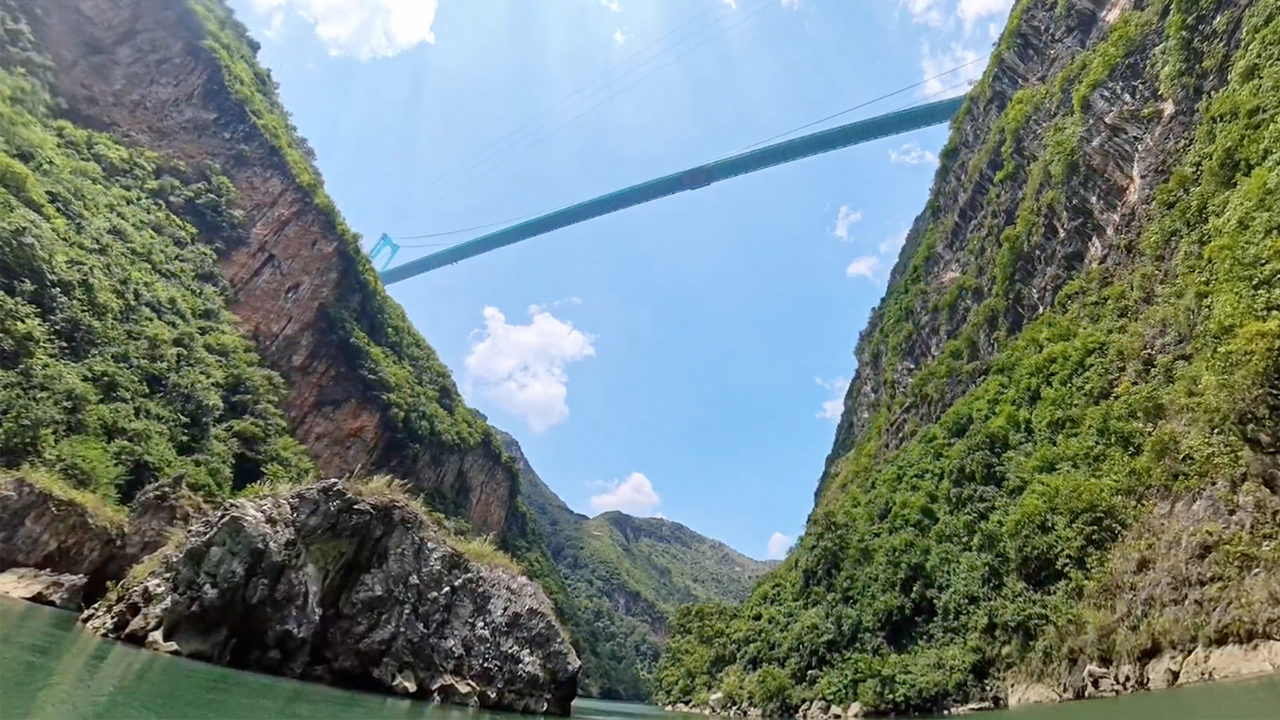America is Building The World’s First Nuclear Fusion Plant
- Youtube Views 978,327 VIDEO VIEWS
Video hosted by Fred Mills. This video contains paid promotion for Brilliant.
THERE ARE complex building sites, and then there are nuclear fusion reactors.
For decades, scientists and engineers have been trying to construct giant machines that recreate what happens inside the sun.
It’s where instead of splitting atoms to generate power — like with nuclear fission — they’re forced together at extreme temperatures. If successful, these systems could bring about a virtually limitless source of energy.
But — unsurprisingly — it’s proving to be immensely difficult, with even huge multinational collaborations struggling to make it work.
Now though, a new player has entered the race. It’s a small, privately funded US start-up that’s making rapid progress.
And not only is it catching up to its much bigger competitors; it looks like it might just win a race to master a technology that has, at times, seemed impossible.
Fusion confusion
OK, so if you’re not a regular B1M viewer you might be wondering right now — what on Earth is nuclear fusion?
Well, to get the full rundown, you might want to go and watch one of our videos from 2024 first. Because that’s when we went right inside the biggest fusion reactor in the world currently under construction.
But if you’ve already seen it or you’re not in the mood for getting really technical, then here’s a very simple summary.
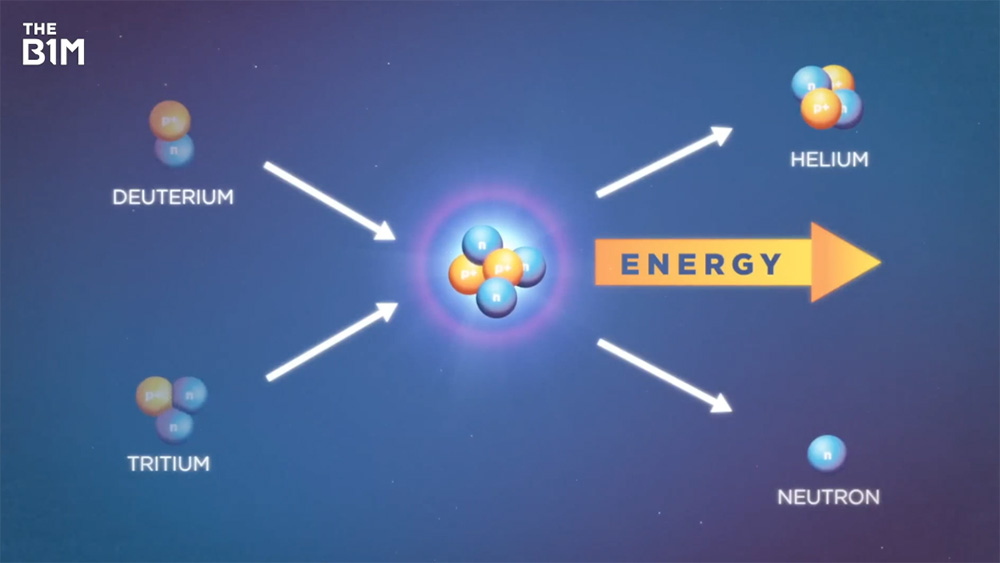
Above: In nuclear fusion, energy is created by forcing isotopes of hydrogen together at extreme temperatures.
Basically, it’s where you take a whole bunch of hydrogen atoms, heat them up a lot — we’re talking over 100 million degrees Celsius — to the point where they form a plasma.
This causes them to fuse together and create helium and neutrons, generating huge amounts of energy.
Most fusion machines are based around a special doughnut-shaped vacuum chamber known as a tokamak.
Inside, a series of magnetic fields confine the plasma and suspend it within a space known as the torus. That way it can be kept apart from anything solid.
Now, the superconducting magnets that make all this possible have to be incredibly strong and able to withstand those crazy temperatures.
And usually, they have to be absolutely massive and made from complicated-sounding materials like niobium-tin, which are very hard to come by. That’s not necessarily the case anymore though, as we’ll discover in a bit.
It's complicated
When we went and visited ITER — that’s the International Thermonuclear Experimental Reactor in France — it was an incredible experience.
It’s enormous and unbelievably complex, and what they’re trying to achieve there is truly remarkable.
But what we also learned is that it’s become more difficult than expected, and the project has suffered multiple delays and setbacks. Because building a fusion machine is extremely hard.
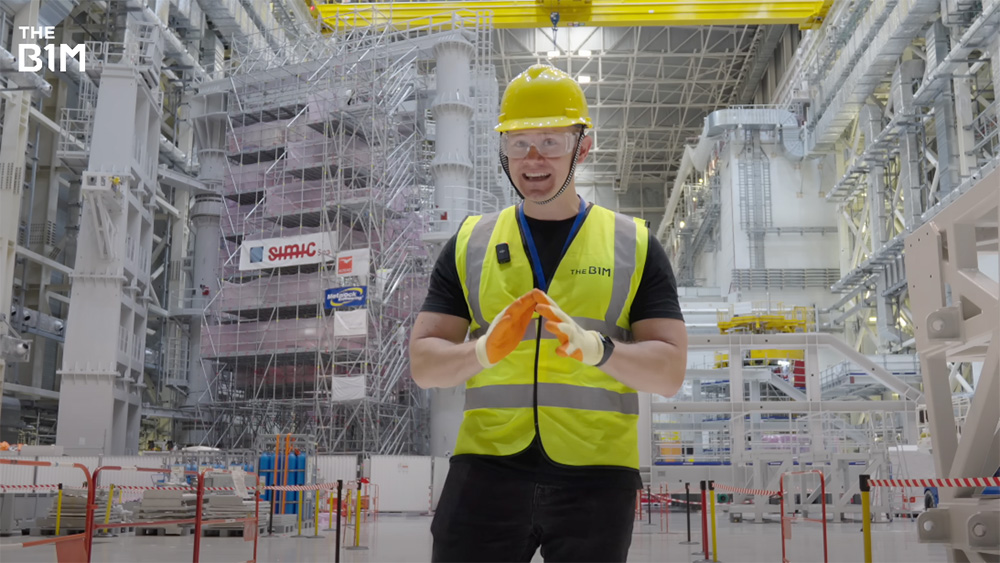
Above: The B1M's Fred Mills in the massive Assembly Hall at ITER.
Another thing to remember about ITER is that it’s basically a big experiment and won’t provide electricity for people to actually use.
Whereas a new firm over in America intends to create not just a fully operational tokamak before anyone else.
It’s already on the way to building a power plant that will bring fusion power to the grid, which has never been done.
Commonwealth Fusion Systems (CFS) is the name, and it’s considerably smaller, and younger, than that huge organisation over in Europe, which formed back in the 1980s.
New kids on the block
CFS was only founded in 2018 by a team from the Plasma Science and Fusion Center, which is part of the famous Massachusetts Institute of Technology, or MIT.
“We are basically trying to build fusion power plants around the world and use that to make firm, clean, abundant energy,” said Alex Creely, director of tokamak operations at CFS.
“We're about seven years old as a company. We're roughly 1,000 people now, so we've grown a bit in those years.”
So, how will they harness the power and get it to the grid? Well, there will be something surrounding all that plasma in the tokamak — what’s called a ‘blanket’ made from a type of molten salt.
This will heat up and generate steam, with the rest of the system set up in a similar way to a nuclear fission plant. All the steam gets passed through a turbine, which then turns and generates electricity.

Above: A look inside CFS' SPARC facility. Image courtesy of Commonwealth Fusion Systems.
As for where the plant is going to be constructed it’ll be happening on a plot of land in Virginia — just outside Richmond.
Called ARC, it will provide 400MW of fusion-generated electricity straight to the state’s power reserves. That’s enough for around 150,000 homes, and the plan is to have it running by the early 2030s.
Now, if you’re a Marvel fan, that name might sound familiar. The glowing thing that powers Iron Man’s suit is called the Arc Reactor and it was based on the idea of nuclear fusion.
Whether CFS’ plant is a nod to this, or it’s just a coincidence, isn’t clear. Either way, building a fusion reactor is no longer the kind of thing you’ll only find in the movies.
It’s happening for real and just like Tony Stark the company has teamed up with some powerful allies to complete their worthy mission.
Big-name backers
Dominion Energy, the largest utility company in the state of Virginia, has signed up to provide expertise and leasing rights for the site.
They’ve been getting plenty of financial support too. So far, the firm has received more than $2BN in private funding, with Bill Gates as one of its investors, and it’s taken millions in government grants.
Another sign that CFS should be taken seriously came in the form of a new strategic partnership with Google.
Signed in June 2025, it’s a deal that saw the tech giant agree to purchase 200MW — so half, in other words — of the electricity generated from the first plant. Google has the option to buy power from future plants as well, and it’s also upped its stake in CFS.
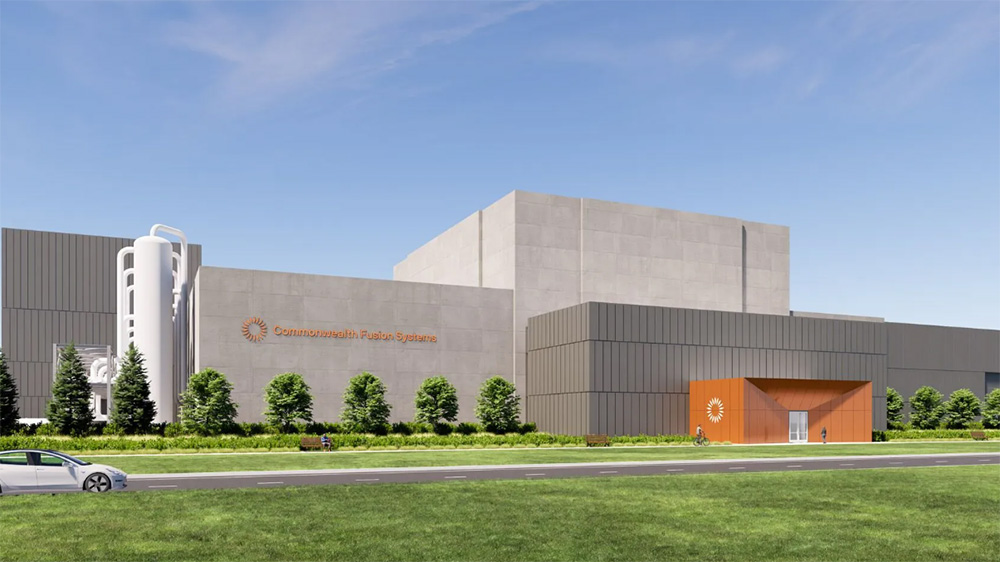
Above: Rendering of the future ARC plant. Image courtesy of Commonwealth Fusion Systems.
OK great, they’re not short of money or heavyweight partners. But surely they can’t just go and piece together a fusion power plant — something that’s eluded scientists for years — without a prototype first?
Well yes, which is why they’ve been doing exactly that. Before they build the ARC they need to finish the SPARC.
Under construction in Devens, Massachusetts, about 50 miles northwest of Boston, it’s a demo project that CFS will use to prove commercial fusion is possible.
“We have to build the tokamak itself, but we also have to build a facility around it to support and operate the machine and also to take the fusion heat out,” explained Creely.
“We have a Tokamak Hall that has four wings around it and I like to think that each of those buildings has something that either goes into the tokamak or comes out of the tokamak.”
Bright SPARC
Firstly, there’s the Operations Building, which is full of diagnostic equipment used to run the machine and monitor what’s happening inside.
Then you’ve got the Radio Frequency Heating Building, which houses all the electronics needed to cook the hydrogen fuel up to the right temperature.
We say ‘cook’ because it works in a similar way to a microwave oven, except it uses radio waves instead.
Remember though, it’s for making plasma, not pizza. Please don’t try and bake one of those in a tokamak unless you like it very well done.
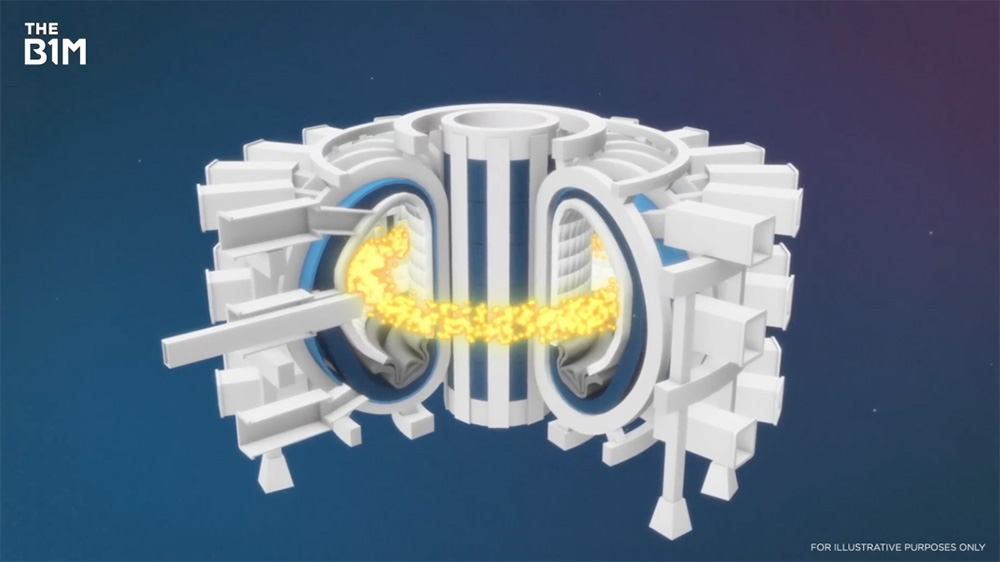
Above: A cutaway graphic that shows plasma being produced inside a tokamak.
Next up in the Power Building, and that’s where all the electricity that goes into those magnets comes from.
Finally, the Utility Building. No, it’s not full of washing machines and cleaning supplies. This utility room is much cooler than that — literally.
As well as being the place where the fusion heat is removed, it’s home to all the cryogenics equipment for keeping the magnets cold. Really cold — lower than 400 degrees Fahrenheit.
Going back to the tokamak, one thing that makes the SPARC one different to others that have been built before is the approach being taken with those magnets.
Although they may look similar to the ones used at ITER — with the same D-shape — they’re made from something else.
A new innovation
Developed by CFS, they use a new type of material called REBCO, which stands for Rare Earth Barium Copper Oxide.
“This was discovered in the 1980s but for a long time you could only make tiny, tiny, quantities in a lab somewhere. But in the last maybe ten years or so, a number of companies around the world have ramped up production of that considerably,” said Creely.
“So, you can make industrially relevant quantities of it now. And our innovation was to take that material and engineer a magnet out of it.”
According to the company, these magnets are so strong they can be made smaller than the ones found on other tokamaks. That means the whole system can be scaled down as well.
Which is obvious when you look at where they’re building their prototype reactor — in a facility that is big, but is still dwarfed by the enormous ITER Enclave.
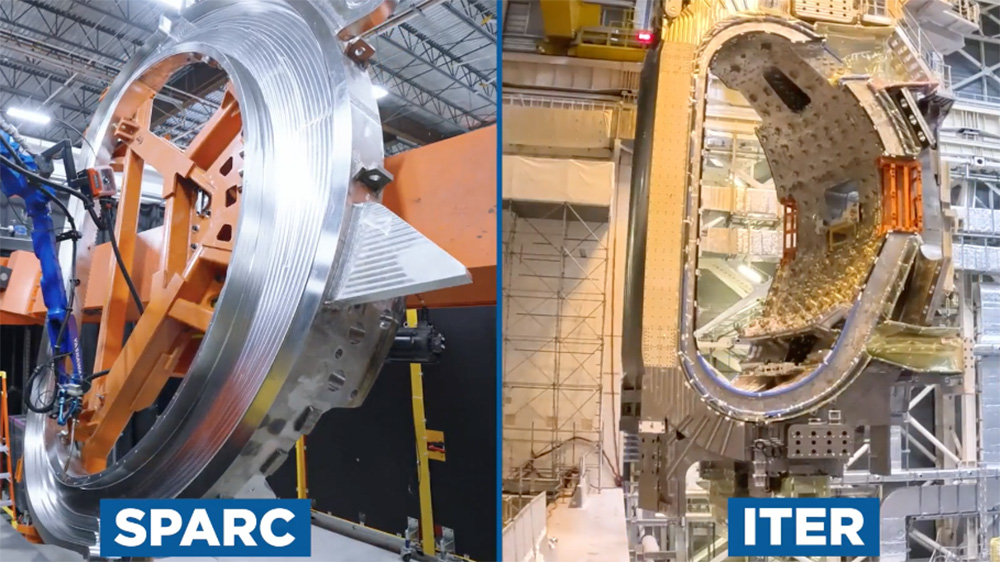
Above: CFS' magnets might be shaped like the ones at ITER, but they were designed using a very different material. Image courtesy of Commonwealth Fusion Systems / ITER Organization.
The idea is to have SPARC producing its first plasma as soon as 2026. Once that happens, the next step will be to have it reach a net positive state.
It’s where the energy generated by the fusion reaction is greater than the energy being put into it. Only then will CFS start properly constructing the main plant.
There’s another reason why CFS appears to be in a bit of a hurry — this is not a one-horse race. It has competition from other groups who also believe they have what it takes to build the first commercial facility.
The competition
Washington-based Helion Energy is probably its main American rival and reckons it could have a plant operating even sooner — by 2028.
They’ve already built six prototypes of their reactor, which is not based on a tokamak, and signed their own power purchase agreement with Microsoft.
Then you’ve got China. Although it seems to be a bit behind the US on the path to commercial power, the country is running some of the world’s largest and most advanced experimental fusion projects.
They’re planning to raise the bar further still by constructing the first ever fusion-fission plant within the next five years. This is where neutrons made from fusion reactions cause fission to occur in surrounding materials.
Don’t worry we’re not going to go into any more detail than that because we’ve done enough science for one day, and to be honest that’s about all we know for now.
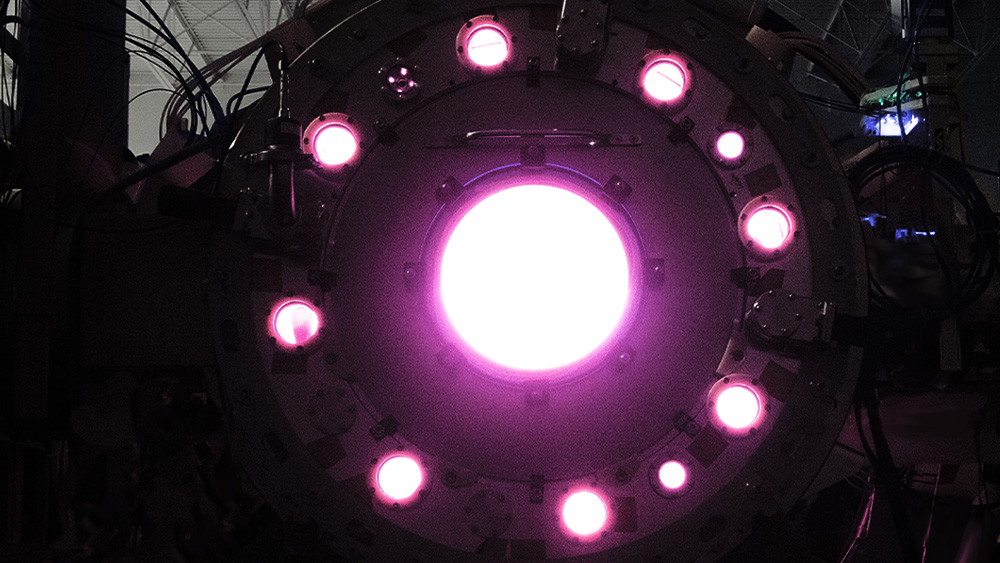
Above: One of several prototypes already developed by Helion Energy. Image courtesy of Helion.
The point is, Commonwealth Fusion Systems might be the one to bet on right now, but it has competition and as we’ve seen before this is not an easy thing to get right.
“CFS has been set up with the sole purpose of ‘go build fusion power plants.’ So, we are structured to be fast, to be efficient, to have this very clear mission,” stated Creely.
“Known physics, this new magnet technology and then a purpose-built organisation allow us to move quickly.”
Growing demands
Whoever does emerge victorious, it’s a breakthrough that can’t come soon enough. Our planet is expected to see unprecedented growth in demand for electricity over the coming years.
Rising populations will lead to more housing, businesses and infrastructure, then you’ve got the electrification of transport and the rise of power-hungry tech like AI.
That means having a new source of clean, abundant energy can be only seen as a positive. This could be how a technology that’s promised so much for so long is finally unleashed.
To try everything Brilliant has to offer for free, visit https://brilliant.org/TheB1M/ You’ll also get 20% off an annual premium subscription.
Additional footage and images courtesy of Commonwealth Fusion Systems, ITER Organisation, BBC News, Fusion for Energy, Google, Gretchen Ertl, Helion, JT-60 SA, MIT, TAE Technologies and Walt Disney Studios Motion Pictures.
We welcome you sharing our content to inspire others, but please be nice and play by our rules.
